| Title | Using Taint Analysis and Reinforcement Learning (TARL) to Repair Autonomous Robot Software |
| Publication Type | Conference Paper |
| Year of Publication | 2020 |
| Authors | Lyons, D., Zahra, S. |
| Conference Name | 2020 IEEE Security and Privacy Workshops (SPW) |
| Date Published | may |
| Keywords | automated repair, autonomous robots, autonomous system, composability, formal verification, maintenance engineering, Metrics, Monitoring, performance guarantee, pubcrawl, reinforcement learning, ROS, self-healing, Software, taint analysis, Uncertainty |
| Abstract | It is important to be able to establish formal performance bounds for autonomous systems. However, formal verification techniques require a model of the environment in which the system operates; a challenge for autonomous systems, especially those expected to operate over longer timescales. This paper describes work in progress to automate the monitor and repair of ROS-based autonomous robot software written for an apriori partially known and possibly incorrect environment model. A taint analysis method is used to automatically extract the dataflow sequence from input topic to publish topic, and instrument that code. A unique reinforcement learning approximation of MDP utility is calculated, an empirical and non-invasive characterization of the inherent objectives of the software designers. By comparing design (a-priori) utility with deploy (deployed system) utility, we show, using a small but real ROS example, that it's possible to monitor a performance criterion and relate violations of the criterion to parts of the software. The software is then patched using automated software repair techniques and evaluated against the original off-line utility. |
| DOI | 10.1109/SPW50608.2020.00045 |
| Citation Key | lyons_using_2020 |
 Using Taint Analysis and Reinforcement Learning (TARL) to Repair Autonomous Robot Software
Using Taint Analysis and Reinforcement Learning (TARL) to Repair Autonomous Robot Software

